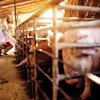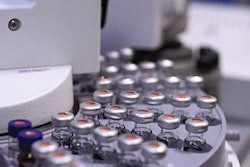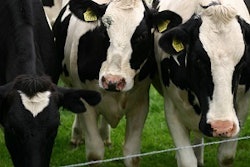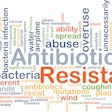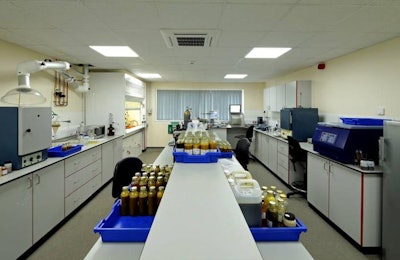
Dioxins are environmental pollutants caused unintentionally as the by-product several human activities — particularly those involving combustion. They are described by the World Health Organisation (WHO) as “a group of dangerous chemicals known as persistent organic pollutants (POPs). Dioxins are of concern because of their highly toxic potential. Experiments have shown they affect a number of organs and systems.”
Dioxins tend to collect at the top of the food chain. They are lipophilic by nature so are concentrated in the fatty tissues of animals and, once eaten, in those of humans. Meats, eggs, fish, dairy products and animal fats tend to have the highest dioxin concentrations. Exposure to dioxins can cause skin conditions, mild liver damage, decreased sperm production and sperm abnormalities. There is also believed to be a link to the increased risk of cancer.
Many countries monitor their food supply for dioxins, and there is international cooperation between the U.S. Food and Drug Administration (FDA), Environmental Protection Agency (EPA), Department of Agriculture, and the European Union to address international concerns about contamination.
WHO reports that early contamination detection prevents large-scale impact: “In many instances, dioxin contamination is introduced via contaminated animal feed, e.g. incidences of increased dioxin levels in milk or animal feed were traced back to clay, fat or citrus pulp pellets used in the production of the animal feed.”
Animal feed implicated
During the 1990s, several cases of dioxin contamination in foodstuffs were identified in the United States and Europe. Feed ingredients, such as citrus pulp and anti-caking agent, ball clay, were believed to be the source of the problem. The international nature of the situation emphasized the need to conduct thorough testing for dioxins to identify outbreaks and spot trends.
However, that was not the end of the issue. In 2008, elevated levels of dioxins were found in some pork products in Ireland. Once again, contaminated animal feed was implicated, in this case the fuel oil used in the drying of the affected feed. A major dioxin contamination issue was also identified in the German compound feed industry in 2010-11.
After investigation, it quickly became apparent that the German contamination was caused by illegal activity in the fats and oil supply chain, and that standard procedures were not at fault.
Ongoing testing
While it is not unreasonable to assume dioxins can enter the food chain via animal feed, it is certainly not the only potential source. Dioxins can be conveyed over significant distances in the air and in water from where they can eventually enter the food chain. However, to ensure the safety of animal feed, a series of tests have been conducted in the U.K. A variety of feed types were sampled – including monogastric and ruminant complete feeds, complementary feeds, and premixtures and mineral licks/blocks – to provide verification that dioxin controls in the feed supply chain were effective.
Since summer 2012, more than of 300 U.K. feed industry compound feed samples have been tested for dioxins, furans, dioxin-like polychlorinated biphenyls (PCBs) and non-dioxin-like PCBs. Dioxin levels were found to be below legal limits.
The legal limit for dioxins and furans in most feeds in the U.K. is 0.75 ng/kg (parts per trillion) of toxicity equivalents, with an action limit set at 0.5 ng/kg.
The results are shown as “upper bound” figures. This is the sum of the limits of detection for each “congener” tested for, plus any contamination that is found. The full results for each sample indicate there is only minimal contamination and the majority of results show no detectable dioxins or furans.
In 2013, two samples were found to contain detectable levels of contamination after being analysed for the EU-uniform maximum levels for the non-dioxin-like PCBs (ICES- 6). The samples came from lactating sow feed and a mineralized protein cattle supplement. After further testing, no evidence of ongoing contamination has been found.
Visible supply chain
Positive test results do not mean animal feed producers can be complacent. The industry should demand to see a more visible global supply chain that demonstrates the use of high-quality, safe and legal raw materials. Where raw materials come through commodity supply chains, and some oils, such as palm oil mill effluent (POME), can be technical grade or feed grade, there will always be the possibility of co-mingling and/or deliberate adulteration.
While the controls on dioxins provide the feed industry with good assurance, this is not the end of the story. Even if the controls ensure dioxin contamination is limited, there are other contaminants and adulterations to watch out for in the supply chain. For this reason, the industry is urged to be vigilant and increase monitoring of fats and oils in supply chains further.
Despite thorough testing, there has been no evidence of dioxin contamination within the U.K. compound feed industry in the past three years. This is as it should be, given the strict controls in place on feed ingredients at risk of contamination (principally products which have been direct dried, minerals and fats and oils).
The hope is that the same standards can be applied worldwide (where they aren’t already) so that the feed industry can be rid of the suspicion of being the source of dioxin contamination.

